Eye Health
How to submit an article:
- Registered users can submit any published journal article that has a unique DOI (Digital Object Identifier) name or link to Research Hub.
- For example, you can paste the full DOI link:
https://doi.org/10.1109/5.771073or just the DOI name:10.1109/5.771073into the field above and click submit. - The person who is first to submit a valid article to Research Hub will forever be credited for it, and every article submission earns you +6 Research Points.
Sub-Topics:
Related Topics
Published research studies are articles that present the findings of original research that has undergone a peer-review process and has been made publicly available in scholarly journals, books or other media.

Recommendations for nutritional supplements for dry eye disease: current advances
2024 May 30 Frontiers in Pharmacology Cong Y, Zhang Y, Han Y, Wu Y, Wang D, Zhang B
Systematic Review Review Article Omega-3 Fatty Acids Dry EyeThe review reveals that nutritional supplements, particularly fish oils, vitamins, trace elements, and phytochemical extracts, show promising therapeutic potential for Dry Eye Disease management.
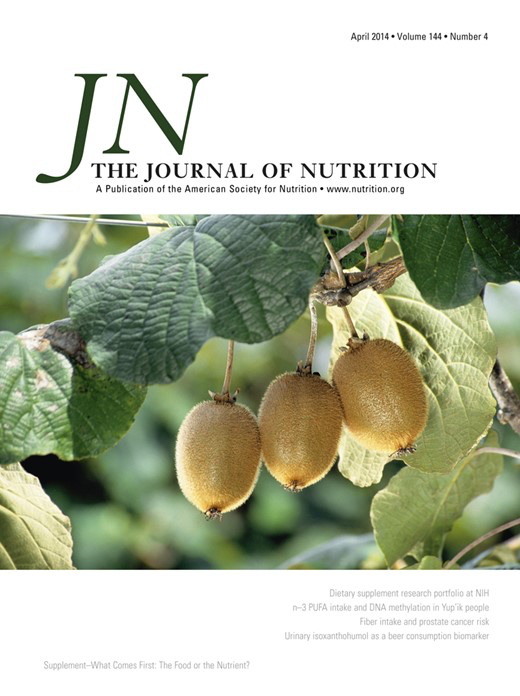
Intake of Blueberries, Anthocyanins, and Risk of Eye Disease in Women
2024 Apr The Journal of Nutrition Sesso HD, Rautiainen S, Park SJ, Kim E, Lee IM, Glynn RJ, et al.
Cohort Study Clinical Study Eye Health Age-Related Macular Degeneration Anthocyanins BlueberryGreater intake of blueberries considerably decreases the risk of age-related macular degeneration, while a remarkable dietary intake of anthocyanins inversely correlates with cataract incidents.
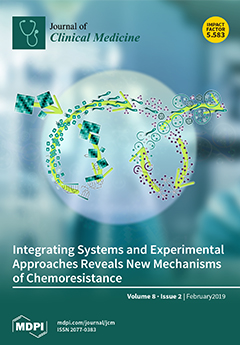
Efficacy of Omega-3 Intake in Managing Dry Eye Disease: A Systematic Review and Meta-Analysis of Randomized Controlled Trials
2023 Nov 10 Journal of Clinical Medicine Wang WX, Ko ML
Meta-Analysis Systematic Review Omega-3 Fatty Acids Eicosapentaenoic Acid Dry EyeOmega-3 fatty acid supplements can effectively alleviate symptoms of dry eye disease, especially when consumed in high doses for a long term and with high eicosapentaenoic acid levels.
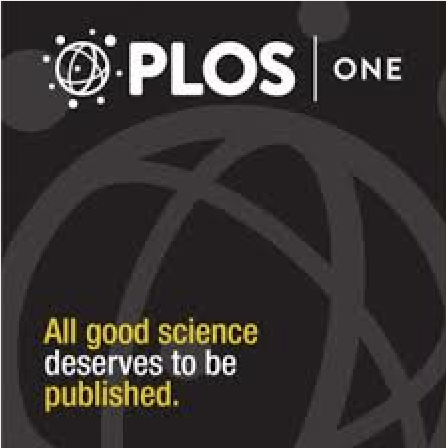
Effects of acupuncture on age-related macular degeneration: A systematic review and meta-analysis of randomized controlled trials
2023 Mar 23 PLOS One Sun W, Zhao Y, Liao L, Wang X, Wei Q, Chao G, et al.
Meta-Analysis Systematic Review Age-Related Macular Degeneration AcupunctureAcupuncture, either alone or as an adjunct, improved the clinical efficacy and visual acuity of age-related macular degeneration patients, particularly those with dry AMD.
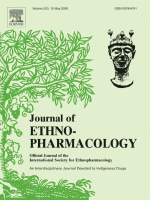
Review on potential effects of traditional Chinese medicine on glaucoma
2023 Mar Journal of Ethnopharmacology Qi S, Zhang J, Zhu H, Wang Z, Li W
Review Article GlaucomaTraditional Chinese Medicines (TCM) could increase the survival rate of retinal ganglion cells, thereby playing an active role in treating glaucoma.
Research insights are moderated by the Research Hub team and offer an at-a-glance overview of interesting research findings.

2024 Frontiers in Pharmacology
The review reveals that nutritional supplements, particularly fish oils, vitamins, trace elements, and phytochemical extracts, show promising therapeutic potential for Dry Eye Disease management.
Systematic Review Dry Eye Omega-3 Fatty Acids
Recommendations for nutritional supplements for dry eye disease: current advances
Cong Y, Zhang Y, Han Y, Wu Y, Wang D, Zhang B

2024 The Journal of Nutrition
Greater intake of blueberries considerably decreases the risk of age-related macular degeneration, while a remarkable dietary intake of anthocyanins inversely correlates with cataract incidents.
Cohort Study Age-Related Macular Degeneration Anthocyanins Blueberry
Intake of Blueberries, Anthocyanins, and Risk of Eye Disease in Women
Sesso HD, Rautiainen S, Park SJ, Kim E, Lee IM, Glynn RJ, et al.

2023 Journal of Clinical Medicine
Omega-3 fatty acid supplements can effectively alleviate symptoms of dry eye disease, especially when consumed in high doses for a long term and with high eicosapentaenoic acid levels.
Meta-Analysis Dry Eye Eicosapentaenoic Acid Omega-3 Fatty Acids
Efficacy of Omega-3 Intake in Managing Dry Eye Disease: A Systematic Review and Meta-Analysis of Randomized Controlled Trials
Wang WX, Ko ML

2023 PLOS One
Acupuncture, either alone or as an adjunct, improved the clinical efficacy and visual acuity of age-related macular degeneration patients, particularly those with dry AMD.
Meta-Analysis Acupuncture Age-Related Macular Degeneration
Effects of acupuncture on age-related macular degeneration: A systematic review and meta-analysis of randomized controlled trials
Sun W, Zhao Y, Liao L, Wang X, Wei Q, Chao G, et al.

2023 Journal of Ethnopharmacology
Traditional Chinese Medicines (TCM) could increase the survival rate of retinal ganglion cells, thereby playing an active role in treating glaucoma.
Review Article Glaucoma
Review on potential effects of traditional Chinese medicine on glaucoma
Qi S, Zhang J, Zhu H, Wang Z, Li W
Review Articles
Review articles summarise and critically evaluate the current state of research on a specific topic or field by synthesising multiple primary research studies.

Recommendations for nutritional supplements for dry eye disease: current advances
2024 May 30 Frontiers in Pharmacology Cong Y, Zhang Y, Han Y, Wu Y, Wang D, Zhang B
Systematic Review Review Article Omega-3 Fatty Acids Dry EyeThe review reveals that nutritional supplements, particularly fish oils, vitamins, trace elements, and phytochemical extracts, show promising therapeutic potential for Dry Eye Disease management.

Efficacy of Omega-3 Intake in Managing Dry Eye Disease: A Systematic Review and Meta-Analysis of Randomized Controlled Trials
2023 Nov 10 Journal of Clinical Medicine Wang WX, Ko ML
Meta-Analysis Systematic Review Omega-3 Fatty Acids Eicosapentaenoic Acid Dry EyeOmega-3 fatty acid supplements can effectively alleviate symptoms of dry eye disease, especially when consumed in high doses for a long term and with high eicosapentaenoic acid levels.

Effects of acupuncture on age-related macular degeneration: A systematic review and meta-analysis of randomized controlled trials
2023 Mar 23 PLOS One Sun W, Zhao Y, Liao L, Wang X, Wei Q, Chao G, et al.
Meta-Analysis Systematic Review Age-Related Macular Degeneration AcupunctureAcupuncture, either alone or as an adjunct, improved the clinical efficacy and visual acuity of age-related macular degeneration patients, particularly those with dry AMD.

Review on potential effects of traditional Chinese medicine on glaucoma
2023 Mar Journal of Ethnopharmacology Qi S, Zhang J, Zhu H, Wang Z, Li W
Review Article GlaucomaTraditional Chinese Medicines (TCM) could increase the survival rate of retinal ganglion cells, thereby playing an active role in treating glaucoma.

Lutein and Zeaxanthin and Their Roles in Age-Related Macular Degeneration—Neurodegenerative Disease
2022 Feb 16 Nutrients Mrowicka M, Mrowicki J, Kucharska E, Majsterek I
Lutein and zeaxanthin, obtained from sources like dark leafy vegetables and fruits, play a crucial role in defending against oxidative stress and scavenging free radicals. These carotenoids, concentrated in the macula of the retina, are essential for eye health. Specific binding proteins, StARD3 for lutein and GSTP1 for zeaxanthin, facilitate their accumulation in the retina. Supportive therapy with lutein and zeaxanthin has been shown to delay the progression of eye diseases, such as age-related macular degeneration (AMD) and cataracts. The article provides insights into the metabolism and bioavailability of these carotenoids, emphasizing the importance of consuming xanthophyll-rich foods.
Review Article Age-Related Macular Degeneration ZeaxanthinClinical Trials
Clinical trials are research studies that involve people and are conducted to evaluate the safety and efficacy of new treatments or interventions, such as drugs, medical devices, or behavioural therapies.
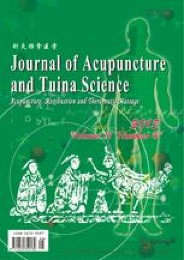
Efficacy of electroacupuncture for patients with dry eye syndromes: a randomized controlled trial
2022 Dec Journal of Acupuncture and Tuina Science Zhang D, Zhao Y, Yang Y, Liu X, Zhao Y, Shi Z, et al.
Both electroacupuncture (EA) and acupuncture alone effectively improve clinical symptoms, prolong tear film break-up time (TF-BUT), and enhance corneal sensitivity (CS) in DES patients. Additionally, both treatments significantly enhance QOL and reduce anxiety, with EA showing superior effectiveness in increasing tear secretion compared to acupuncture alone.
Randomised Controlled Trial Electroacupuncture Dry Eye
Efficacy observation of acupuncture for dry eye syndrome of lung-yin deficiency pattern
2021 Feb Journal of Acupuncture and Tuina Science Jing-wen L, Yao-dong Z, Ling Z, Cong H
Combining Er Long Xi Zhu and Guo Yan Re needling manipulations resulted in significantly higher clinical efficacy compared to twirling reinforcing manipulation for treating DES of lung-yin deficiency pattern.
Randomised Controlled Trial Clinical Study Acupuncture Dry Eye
A Mechanism Study of Electroacupuncture for Dry Eye Syndrome by Targeting Conjunctival Cytokine Expressions
2019 Oct 04 Current Eye Research Zhang D, Zhao Y, Yang YT, Zhao Y, Wu DY, Liu XX, et al.
Electroacupuncture effectively improves symptoms of DES by reducing the ocular surface disease index (OSDI), increasing tear production, and extending tear film break-up time (BUT), possibly through regulation of conjunctival cytokine expressions such as MCP-1, M-CSF, RANTES, and TIMP-1, and involvement in pathways including Jak-STAT, chemokine signaling, and tumor necrosis factor signaling.
Randomised Controlled Trial Clinical Study Electroacupuncture Dry Eye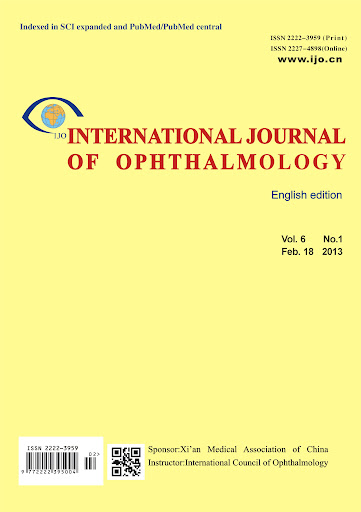
Macular pigment and serum zeaxanthin levels with Goji berry supplement in early age-related macular degeneration
2018 Jun 18 International Journal of Ophthalmology Shang Li, Na Liu, Li Lin, et al.
Randomised Controlled Trial Age-Related Macular Degeneration ZeaxanthinGoji berry supplementation can improve macular pigment and visual acuity in patients with early age-related macular degeneration by increasing serum zeaxanthin levels.
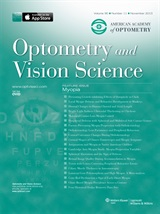
Goji Berry Effects on Macular Characteristics and Plasma Antioxidant Levels
2011 Feb Optometry and Vision Science Bucheli P, Vidal K, Shen L, Gu Z, Zhang C, Miller LE, et al.
Randomised Controlled Trial Goji Berry Eye Health Antioxidant ZeaxanthinDaily goji berry supplementation increases antioxidant levels and protects visual health in the elderly, though the exact mechanism remains unclear.
Study Protocols
Published study protocols are detailed plans that outline the objectives, methodology, statistical analyses, and organisation of a research study that have been made publicly available for others to review and use as a reference.
Presentation Slides

Systematic Review
The review reveals that nutritional supplements, particularly fish oils, vitamins, trace elements, and phytochemical extracts, show promising therapeutic potential for Dry Eye Disease management.
Cong Y, Zhang Y, Han Y, Wu Y, Wang D, Zhang B

Cohort Study
Greater intake of blueberries considerably decreases the risk of age-related macular degeneration, while a remarkable dietary intake of anthocyanins inversely correlates with cataract incidents.
Sesso HD, Rautiainen S, Park SJ, Kim E, Lee IM, Glynn RJ, Buring JE, Christen WG

Meta-Analysis
Omega-3 fatty acid supplements can effectively alleviate symptoms of dry eye disease, especially when consumed in high doses for a long term and with high eicosapentaenoic acid levels.
Wang WX, Ko ML

Meta-Analysis
Acupuncture, either alone or as an adjunct, improved the clinical efficacy and visual acuity of age-related macular degeneration patients, particularly those with dry AMD.
Sun W, Zhao Y, Liao L, Wang X, Wei Q, Chao G, Zhou J

Review Article
Traditional Chinese Medicines (TCM) could increase the survival rate of retinal ganglion cells, thereby playing an active role in treating glaucoma.
Qi S, Zhang J, Zhu H, Wang Z, Li W

Network Pharmacology
Chrysanthemum has several active ingredients that can potentially treat dry eye by inhibiting inflammation-related factors and pathways, thus reducing inflammation of lacrimal gland tissue.
Cao LY, Long Q, Jiang PF, Peng J, Peng QH
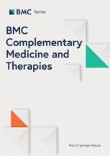
Experimental Study
Chrysanthemum extract has protective effects on light-damaged retinas, reducing oxidative stress and improving cellular viability.
Gong Y, Wang X, Wang Y, Hao P, Wang H, Guo Y, Zhang W
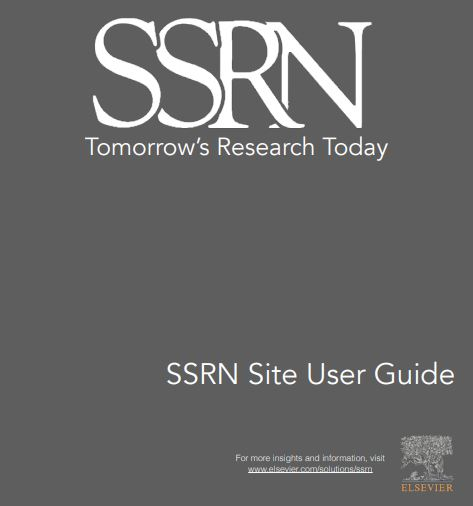
Review Article
Phytochemicals in carrots, particularly carotenoids, are effective at reducing eyesight degeneration and treating chronic eye defects due to their antioxidant and anti-inflammatory properties.
Taiwo EA, Abdulkareem TT, Fajemisin E
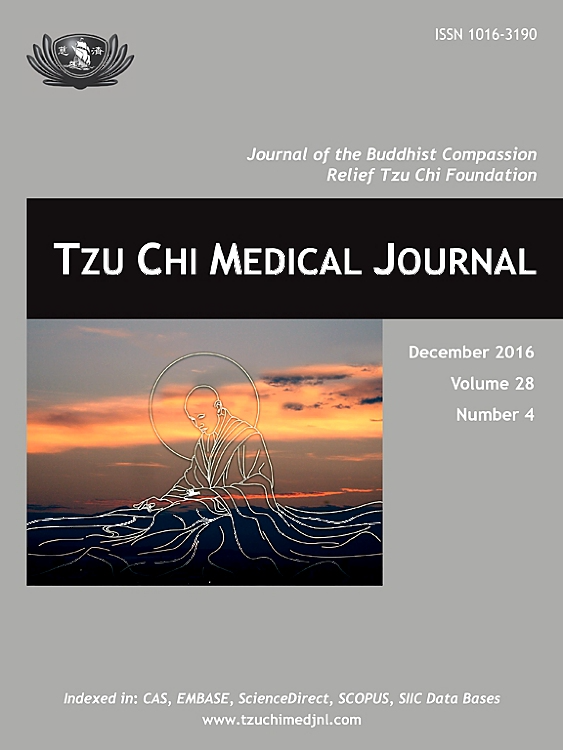
Systematic Review
Traditional Chinese medicine (TCM) can effectively treat dry eye disease (DED), and combining TCM with Western medicine can significantly enhance therapeutic effects and reduce treatment costs.
Yang CC, Su SH, Ho TJ

Clinical Study
Anthocyanin supplements improve vision health by relaxing ciliary muscles, regenerating rhodopsin, and enhancing retinal blood circulation.
Nomi , Iwasaki-Kurashige , Matsumoto

Review Article
Chrysanthemum, rich in unique chemical compounds, offers significant health benefits such as stress relief, cardio protection, immunity boost, improved eye health, and osteoporosis risk reduction.
SHAHRAJABIAN, M. H., SUN, W., ZANDI, P., CHENG, Q.

Meta-Analysis
Polyunsaturated fatty acids treatment shows improved outcomes for patients with nonspecific typical dry eye disease, in particular as a short-term intervention.
Chi SC, Tuan HI, Kang YN

Theoretical Article
Chrysanthemum, a plant primarily grown in China and Japan, offers significant health benefits including stress reduction, cardiovascular improvement, and lowering osteoporosis risk.
SHAHRAJABIAN MH

Randomised Controlled Trial
Goji berry supplementation can improve macular pigment and visual acuity in patients with early age-related macular degeneration by increasing serum zeaxanthin levels.
Shang Li, Na Liu, Li Lin, et al.
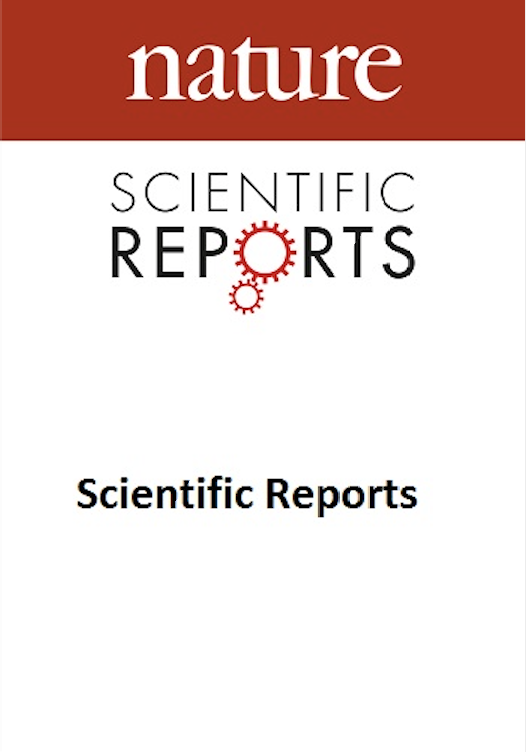
Experimental Study
The component pterostilbene, found naturally in blueberries, shows potential in preventing inflammation and oxidative stress on the human cornea, suggesting protection against dry eyes.
Li J, Ruzhi Deng , Hua X, Zhang L, Lu F, Coursey TG, Pflugfelder SC, Li DQ

Randomised Controlled Trial
Daily goji berry supplementation increases antioxidant levels and protects visual health in the elderly, though the exact mechanism remains unclear.
Bucheli P, Vidal K, Shen L, Gu Z, Zhang C, Miller LE, Wang J
Executive Summary
Write an executive summary in the form of a blog article on the topic of "Research into Chinese medicine treatment for Eye Health" summarising the research below and using language that can be easily understood by patients and avoiding medical jargon using a professional and caring tone of voice.
Write an executive summary in the form of a blog article on the topic of "Researched Chinese medicine treatments for Eye Health" summarising the research below in an objective and easy to understand way, and using language that can be easily understood by patients. Group the article into Chinese medicine treatments first, followed by nutrition and other treatments. Avoid using medical jargon and use a professional and caring tone of voice.
Write me a concise but easy to understand executive summary on the topic of "Chinese medicine treatments for Eye Health" based on the following research that I will give you. Your summary should be 2 paragraphs long in Australian English spelling and include references to the studies.
A Systematic Review published in 2024 in the journal Frontiers in Pharmacology found that The review reveals that nutritional supplements, particularly fish oils, vitamins, trace elements, and phytochemical extracts, show promising therapeutic potential for Dry Eye Disease management. The methodology used in the research paper mainly focuses on evaluating different oral nutritional supplements with varied compositions and dosages, in order to assess their impact on Dry Eye Disease symptoms. These supplements include key components like fish oils, vitamins, trace elements, and extracts from plants, recognized for their potential nutritional value. Emphasizing the role of nutrition in combating ocular surface diseases, the research also emphasizes the imbalance caused by deficiencies in polyunsaturated fatty acids and vitamin insufficiencies, which can lead to ocular issues such as inflammation and oxidative stress. The results discussion outlines considerable benefits of using these supplements, not only for managing Dry Eye Disease symptoms but also potentially for overall ocular health. It was observed that nutrients in these supplements hold promising therapeutic qualities, presenting new perspectives for supplement combinations in Dry Eye Disease treatment. Beyond the well-known nutrients, it was suggested that exploring novel nutrients could help establish even more effective management strategies for Dry Eye Disease.
A Cohort Study published in 2024 in the journal The Journal of Nutrition found that Greater intake of blueberries considerably decreases the risk of age-related macular degeneration, while a remarkable dietary intake of anthocyanins inversely correlates with cataract incidents. Middle-aged and older women, numbering 36,653 and 35,402 originally without cataract and AMD, provided data for the study via semiquantitative food frequency questionnaires. Insights were derived on the consumption of blueberries by these women, with frequency varied from none to over two servings weekly. Additionally, total anthocyanin consumption was analysed, with major subclasses adjusted for energy and then into quintiles. Self-reported risk factors for eye diseases were adjusted in the multivariable hazard ratios. On analysis, it was found that a significant portion of participants consumed a minimum of one serving of blueberries weekly. Thus, compared to no blueberry intake, it was observed that those consuming the fruit exhibited a decrease in the total instances of AMD, while visually significant AMD remained unaffected. Furthermore, dietary anthocyanin showed a modest yet significant inverse association with cataract occurrences, but no notable correlation with AMD.
A Meta-Analysis published in 2023 in the journal Journal of Clinical Medicine found that Omega-3 fatty acid supplements can effectively alleviate symptoms of dry eye disease, especially when consumed in high doses for a long term and with high eicosapentaenoic acid levels. The methodology of this study involved an intensive review of data from multiple reliable sources like PubMed, Embase, and others covering the timespan from 2013 to 2023. The focus was on randomized clinical trials that studied the impact of omega-3 fatty acids on patients with dry eye disease and provided accessible pre- and post-intervention data. Studies with overlapping participants were excluded, as were studies without omega-3 supplementation or not featuring a placebo control or quantitative assessments. Independent reviewers extracted data pertaining to dry eye symptom scores and other related metrics. The results showed that patients who were administered omega-3 treatment demonstrated considerable improvement in symptoms of dry eye disease compared to those on a placebo treatment. The meta-regression analysis deduced positive correlations between the daily dose of omega-3, duration of omega-3 intake, and percentage of eicosapentaenoic acid, with a reduction in dry eye symptom scores. Similar trends were observed with other dry eye related metrics. These findings provide substantial evidence on the beneficial effect of omega-3 fatty acid supplements in managing dry eye disease. However, due to the diversity in patient characteristics and the heterogeneity in study results, care should be taken in widely applying these findings.
A Meta-Analysis published in 2023 in the journal PLOS One found that Acupuncture, either alone or as an adjunct, improved the clinical efficacy and visual acuity of age-related macular degeneration patients, particularly those with dry AMD. The study conducted a meta-analysis on nine out of 226 articles selected from various databases such as PubMed, Ovid Medline, Embase, Cochrane Library, The Chinese National Knowledge Infrastructure Database, VIP, Wanfang, and SINOMED up until September 4, 2022. Two separate reviewers independently carried out the literature screening and data extraction and used RevMan 5.4 software for the meta-analysis. In the discussion of the results, it was found that 508 AMD patients (representing a total of 631 eyes), including 360 dry eyes and 271 wet eyes, showed improvement in both clinical efficacy and best-corrected visual acuity after receiving acupuncture treatment. The treatment also led to a reduction in their central macular thickness. However, while the benefits of acupuncture were seen, the quality of evidence supporting these outcomes was judged as ranging from "low" to "very low".
A Review Article published in 2023 in the journal Journal of Ethnopharmacology found that Traditional Chinese Medicines (TCM) could increase the survival rate of retinal ganglion cells, thereby playing an active role in treating glaucoma. Methodology: The research involved a comprehensive collection and collation of scientific articles from various databases about TCM and its application on glaucoma. The therapeutic effects of TCM, including their specific formulae, crude drugs, and active components, were analyzed based on existing experimental and clinical research. The GSE26299 database was also used for a bioinformatics analysis of glaucoma, employing the GEO database chip. Results: The traditional Chinese medicines exhibited positive effects in treating glaucoma by potentially improving the microcirculation, managing oxidative stress, and regulating the immune system, which in turn increased the survival rate of retinal ganglion cells. Furthermore, the bioinformatics analysis speculated the pathogenesis of glaucoma to be associated with multiple signaling pathways. The study concluded that TCM could alleviate and treat glaucoma through various methods, with the provision that the differentiation syndrome should be the basis for proposing suitable treatment options.
A Network Pharmacology published in 2023 in the journal TMR Pharmacology Research found that Chrysanthemum has several active ingredients that can potentially treat dry eye by inhibiting inflammation-related factors and pathways, thus reducing inflammation of lacrimal gland tissue. The study used network pharmacology methods and various databases to further analyze the mechanism of Chrysanthemum in treating dry eye. First, the TCMSP was used to screen for candidate active ingredient molecules of chrysanthemum showcasing requisite oral bioavailability and drug similarity. The active ingredients of chrysanthemum were then identified, followed by target prediction. Cytoscape was used to construct a compound-target network for chrysanthemum. The Online Mendelian Inheritance in Man and DisGeNET databases were utilized to pinpoint pathogenic genes associated with dry eye, and the STRING database produced an interaction network and bar graph to scrutinize protein interactions. Using Venny, a final drug-active ingredient-key target-disease network was created. The study found that Chrysanthemum has eighty active ingredients corresponding to targets for treating dry eye. These key functional targets primarily regulate gene expression, oxidative stress, immune response, apoptosis, proliferation, regulation of cellular inflammation-related factors, and angiogenesis. The primary pathways associated with these key targets include interleukin signaling, metabolism, cytokine signaling in the immune system, immune system, and signal transduction, thereby improving the condition of dry eye primarily through the inhibition of inflammation-related factors.
A Experimental Study published in 2022 in the journal BMC Complementary Medicine and Therapies found that Chrysanthemum extract has protective effects on light-damaged retinas, reducing oxidative stress and improving cellular viability. The experiment incorporated both in-vitro and in-vivo tests. In the lab, ARPE-19 cells were divided into four groups (control, light-damaged, low-dose extract, high-dose extract), treated with varying levels of chrysanthemum extract, and then exposed to light. Cellular viability and reactive oxygen species production were then observed. A similar grouping approach was used with C57BL/6J mice, where chrysanthemum extract concentration was administered before light exposure. The retinas were evaluated for function, morphology, and apoptosis post-exposure. Light-damage caused a decrease in cellular viability and an increase in reactive oxygen species production. However, treatment with chrysanthemum extract showed improvement in viability and reduction in reactive oxygen species. In mice, light damage caused dysfunction in the retinas, destruction of morphology and increased apoptosis, particularly in the retinal pigment epithelium and photoreceptor layer. Again, chrysanthemum extract treatment improved retinal function, maintained retinal structures, and reduced apoptosis. The extract achieved this by increasing concentration of anti-oxidative enzymes.
A Review Article published in 2021 in the journal SSRN Electronic Journal found that Phytochemicals in carrots, particularly carotenoids, are effective at reducing eyesight degeneration and treating chronic eye defects due to their antioxidant and anti-inflammatory properties. Throughout the review process, seventy original research and review articles were examined, all published between 2000 and 2020 across four major journal databases: Elsevier, PubMed, ResearchGate and Plos One. The focus of the search was directed by six keywords, centring on both in-vivo and in-vitro study results related to the topic of interest. Among the various findings, it was consistently revealed that carrots contain a multitude of bioactive compounds, notably carotenoids, which have been proven to be effective in halting and treating eye degenerations including Nyctalopia, Myopia, Cataracts, Age-related Macular Diseases and Glaucoma. Carotenoids have been found to work as potent antioxidants and anti-inflammatory agents, defending eyes against vision loss due to oxidative stress. Thus, the increased consumption of carrots can potentially serve as a natural therapeutic approach and enhancer of vision.
A Systematic Review published in 2021 in the journal Tzu Chi Medical Journal found that Traditional Chinese medicine (TCM) can effectively treat dry eye disease (DED), and combining TCM with Western medicine can significantly enhance therapeutic effects and reduce treatment costs. The researchers carried out a comprehensive review of studies conducted from 2001 to 2020, focusing on the use of Traditional Chinese Medicine (TCM) and an integration of Chinese and Western medicine for the treatment of DED. Four categories of Chinese medicines were identified for their application in treating DED: anti-oxidants, anti-inflammatory agents, hormone-like agents, and cell-repairing agents. In addition, they also acknowledged the usage of compound herbs like Chi-Ju-Di-Huang-Wan and Qiming granule for alleviating dry eye symptoms. The researchers arrived at significant findings from their examination of multiple studies. The use of Traditional Chinese Medicine (TCM) has shown effective results in the treatment of Dry Eye Disease (DED). Moreover, the integration of TCM with Western medicine has amplified the therapeutic effects in patients while making the treatment cost-effective. This suggests that not only can TCM be a promising approach for treating DED, but a combined treatment strategy with Western medicine can also lead to substantial improvements in curing the condition.
A Clinical Study published in 2019 in the journal Molecules found that Anthocyanin supplements improve vision health by relaxing ciliary muscles, regenerating rhodopsin, and enhancing retinal blood circulation. The methodology of this review involved studying the effects of Anthocyanin, a supplement popular for eye health. Despite the low bioavailability of Anthocyanin, the supplement is reported to appear in intact form and in various metabolites. The review observes how Anthocyanin crosses barriers within the blood to reach the ocular area. The study also performed an in vitro analysis to comprehend how Anthocyanin impacts the ciliary muscles of the eye, crucial in treating vision conditions like myopia and glaucoma. Findings of the review reveal that Anthocyanin also stimulates the reformation of rhodopsin in the rod outer segment of frogs. The compound further demonstrated how to control eye elongation in a model of chick myopia induced by a negative lens. Ultimately, the review consolidated multiple clinical studies that provide evidence for the improvement of dark adaptation and transient myopic shift following intake of Anthocyanin. The supplement notably improves retinal blood circulation among patients with normal tension glaucoma.
A Review Article published in 2019 in the journal Applied Ecology and Environmental Research found that Chrysanthemum, rich in unique chemical compounds, offers significant health benefits such as stress relief, cardio protection, immunity boost, improved eye health, and osteoporosis risk reduction. The study primarily focuses on evaluating the most important chemical extracts of chrysanthemum. These include flavonoids, betaine, choline, and vitamin B1. Further, the researchers identified thirteen compounds unique to chrysanthemum flowers. These were extracted and analyzed to unveil their potential health benefits. In the discussion of results, the authors highlight chrysanthemum's impressive range of health benefits stemming from its chemical composition. It is revealed that chrysanthemum can potentially alleviate stress and anxiety while improving cardiovascular health. It also has properties to guard against oxidative damage and inflammation, support a healthy immune function, enhance eye health, and lessen the risk of osteoporosis. Interestingly, the herb's beneficial traits align with its traditional use in Chinese medicine, underscoring chrysanthemum's potential in promoting holistic, organic health.
A Meta-Analysis published in 2019 in the journal Nutrients found that Polyunsaturated fatty acids treatment shows improved outcomes for patients with nonspecific typical dry eye disease, in particular as a short-term intervention. In this research, randomized clinical trials were searched from various databases, which included Cochrane Library, EMBASE, PubMed, and Web of Science, all investigating the impact of polyunsaturated fatty acids (PUFAs) on patients with nonspecific typical dry eye disease. The trials were conducted until March 2019. A total of thirteen eligible clinical trials with 1782 patients were eventually included. Specific data points such as tear breakup time, Schirmer's test, osmolarity, and ocular surface disease index were extracted by two independent reviewers. A pairwise meta-analysis was undertaken using means and standard deviations under a random-effects model for various outcomes. This research demonstrated that patients who received treatment solely with PUFAs showed significant improvements in specific observations such as tear breakup time, Schirmer's test scores, osmolarity, and ocular surface disease index when compared with patients who only received a placebo. However, it was noted that the positive effects of PUFAs on tear breakup time and ocular surface disease index scores decreased as the duration of treatment increased. Despite this, PUFAs were found to be effective for treating nonspecific typical dry eye disease, especially as a short-term treatment option and displayed few adverse events. The study therefore concluded that PUFA supplements could be beneficial to patients with nonspecific typical dry eye disease who are not using other types of eye medication concurrently.
A Theoretical Article published in 2019 in the journal Applied Ecology and Environmental Research found that Chrysanthemum, a plant primarily grown in China and Japan, offers significant health benefits including stress reduction, cardiovascular improvement, and lowering osteoporosis risk. The study focused on Chrysanthemum, a notable plant in the ornamental industry and traditional Chinese medicine, mainly grown in China and Japan. The researchers identified its crucial chemical extracts such as flavonoids, betaine, choline, and vitamin B1. They additionally pinpointed thirteen significant compounds of chrysanthemum flowers, including acacetin-7-0-beta- D-glucopyranoside, luteolin, acaciin, and boscialin, among others. The findings revealed that chrysanthemum tea exhibits considerable health advantages. It eases stress and anxiety, enhances cardiovascular health, protects against oxidative damage, inhibits inflammation, supports healthy immune function, ameliorates eye health, and decreases the risk for osteoporosis. In traditional Chinese medicine, chrysanthemum is considered a cold herb that dispels pathogenic heat, aids the liver, improves eyesight, and promotes detoxification. The study, therefore, endorsed the treatment with natural Chinese herbal medicine, especially chrysanthemum, over synthetic drugs for a more organic life.
A Randomised Controlled Trial published in 2018 in the journal International Journal of Ophthalmology found that Goji berry supplementation can improve macular pigment and visual acuity in patients with early age-related macular degeneration by increasing serum zeaxanthin levels. In this prospective, randomized controlled study, 114 patients, aged 51 to 92 and with early age-related macular degeneration, were divided into two groups. One group was given a daily supplementation of 25 grams of Goji berries for 90 days while the control group continued with their normal diet. The study used Heterochromatic Flicker Photometry to measure the Macular Pigment Optical Density (MPOD) and High-Performance Liquid Chromatography to analyze the levels of serum lutein and zeaxanthin. These were recorded at the beginning and at the end of the study. In the Goji berry group, by the end of the study, there was no significant change in serum lutein levels. However, there was an increase in serum zeaxanthin levels which coincided with the group's improvement in MPOD. In comparison to the control group, the Goji group had higher zeaxanthin levels and MPOD. The visual acuity of the Goji berry group also showed a relative decrease compared to the baseline. These results suggest Goji berry supplementation can beneficially impact early age-related macular degeneration patients by boosting serum zeaxanthin levels, thus raising MPOD and improving visual acuity.
A Experimental Study published in 2016 in the journal Scientific Reports found that The component pterostilbene, found naturally in blueberries, shows potential in preventing inflammation and oxidative stress on the human cornea, suggesting protection against dry eyes. This research employed an in vitro culture model of human corneal epithelial cells, exposing these cells to a hyperosmotic medium. Gene expression was observed via RT-qPCR, while protein production or activity was found using methods including ELISA, zymography, Western blotting, and immunofluorescent staining. Reactive oxygen species' production was also monitored using a DCFDA kit. Pterostilbene was administered and its effects on the expression of pro-inflammatory mediators and reactive oxygen species production were subsequently observed. The results showed that in corneal cells exposed to hyperosmotic medium, the addition of pterostilbene resulted in a notable decrease in the expression of pro-inflammatory mediators and suppressed overproduction of reactive oxygen species. Furthermore, pterostilbene also showed a significant decrease in the levels of oxidative damage biomarkers; it was found to rebalance homeostasis between oxygenases and anti-oxidative enzymes, demonstrating that pterostilbene has potentially protective effects on the human cornea from inflammation and oxidative stress.
A Randomised Controlled Trial published in 2011 in the journal Optometry and Vision Science found that Daily goji berry supplementation increases antioxidant levels and protects visual health in the elderly, though the exact mechanism remains unclear. In a double-masked, randomized, placebo-controlled study, elderly participants were given either a milk-based goji berry supplement (13.7 g/d) or a placebo for a 90-day period. Eye health was assessed via direct examination to measure pigmentation and soft drusen count in the macula, and blood tests were done to determine plasma zeaxanthin level and total antioxidant capacity. In the discussion of results, the placebo group showed signs of hypopigmentation and soft drusen accumulation in the macula, which did not occur in the group that received the goji berry supplement. The group supplementing with goji berries also showed a significant increase in plasma zeaxanthin levels and total antioxidant capacity, while no change was seen in the placebo group. There were no adverse effects of the supplement reported in either group.
Moderation Tools
Topic
Sign In
Users not signed in are limited to viewing the 5 most recent items of content.